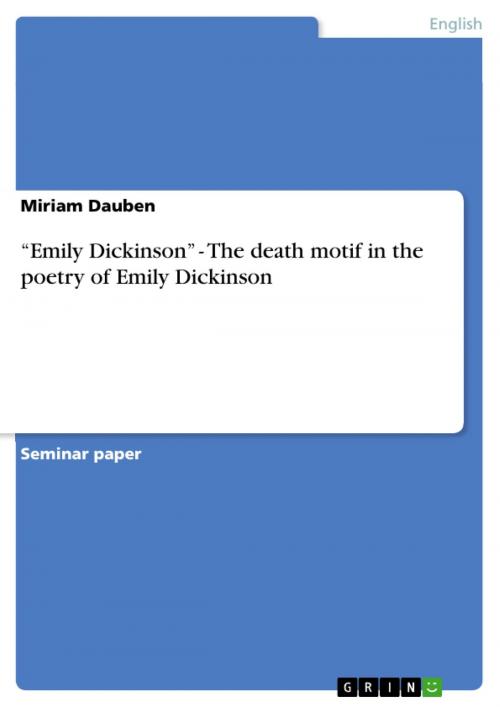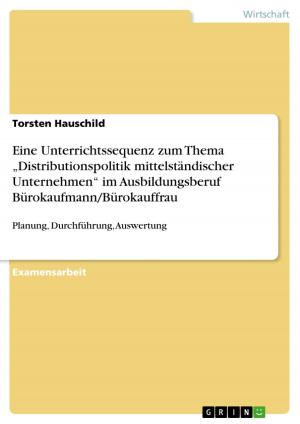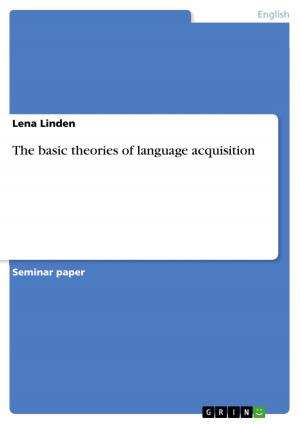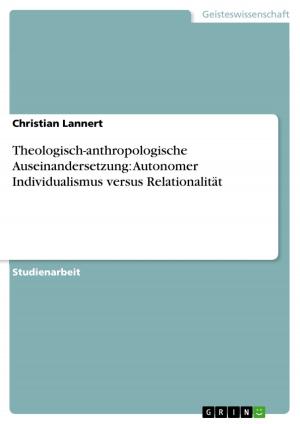'Emily Dickinson' - The death motif in the poetry of Emily Dickinson
The death motif in the poetry of Emily Dickinson
Fiction & Literature, Literary Theory & Criticism, British| Author: | Miriam Dauben | ISBN: | 9783640562671 |
| Publisher: | GRIN Verlag | Publication: | March 11, 2010 |
| Imprint: | GRIN Verlag | Language: | English |
| Author: | Miriam Dauben |
| ISBN: | 9783640562671 |
| Publisher: | GRIN Verlag |
| Publication: | March 11, 2010 |
| Imprint: | GRIN Verlag |
| Language: | English |
Seminar paper from the year 2009 in the subject English Language and Literature Studies - Literature, grade: 3,0, RWTH Aachen University, language: English, abstract: Table of contents 1. Introduction 2. The death motif in the poetry of Emily Dickinson 2.1 General characteristics of death 2.2 Reasons for her interest in death2.3 The relation between time and death 3. Conclusion References 1. Introduction This term paper deals with the topic ''The death motif in the poetry of Emily Dickinson'' and is written behind the background of the seminar 'Emily Dickinson'. First of all my ambition will be to bring out the impact of death and why it is so difficult to define. Further explanations will be given in the paragraph 'General characteristics of death'. Death has always been a traditional theme for poetry and therefore it is not surprising that it was important to Emily Dickinson too. Five or six hundred poems, dealing with death , are proof enough for her enormous interest in this theme. Thus, the question arises why death was so important to her. Reasons for that should be constituted in the paragraph 'Reasons for Emily Dickinson's interest in death'. However she could not finally answer the question that she had asked herself, because she tried to find the salvation through imagination and in con-trast death is something that one has to experience at least. Moreover, those who actually experienced death are not able to communicate anymore with those who live, so humans can not get any knowledge about death. Therefore one can say that her quest for an answer was doomed to failure from the very beginning. One problem, she was confronted with while looking for answer, was the difficult time aspect. However, time does not just appear as a reason for her failure, but also as a poetic strategy, a reason for her interest in death and the description of the precise moment of death, which reflects in the central paragraph 'The relation between time and death'. In order to point out the importance of time in Emily Dickinson's poetry about death, my research question will be what different aspects of time affected her poetry and were expressed through her writing. The most difficult thing of the topic will be to relate the time aspects with each other, because they are settled on different levels. Moreover I am going to analyse the poem 'A Clock stopped -' with respect to the time aspect, because it is representative for the importance of time within her death poetry. [...] Finally a conclusion will be drawn in order to summarize my results and to answer my research question.
Seminar paper from the year 2009 in the subject English Language and Literature Studies - Literature, grade: 3,0, RWTH Aachen University, language: English, abstract: Table of contents 1. Introduction 2. The death motif in the poetry of Emily Dickinson 2.1 General characteristics of death 2.2 Reasons for her interest in death2.3 The relation between time and death 3. Conclusion References 1. Introduction This term paper deals with the topic ''The death motif in the poetry of Emily Dickinson'' and is written behind the background of the seminar 'Emily Dickinson'. First of all my ambition will be to bring out the impact of death and why it is so difficult to define. Further explanations will be given in the paragraph 'General characteristics of death'. Death has always been a traditional theme for poetry and therefore it is not surprising that it was important to Emily Dickinson too. Five or six hundred poems, dealing with death , are proof enough for her enormous interest in this theme. Thus, the question arises why death was so important to her. Reasons for that should be constituted in the paragraph 'Reasons for Emily Dickinson's interest in death'. However she could not finally answer the question that she had asked herself, because she tried to find the salvation through imagination and in con-trast death is something that one has to experience at least. Moreover, those who actually experienced death are not able to communicate anymore with those who live, so humans can not get any knowledge about death. Therefore one can say that her quest for an answer was doomed to failure from the very beginning. One problem, she was confronted with while looking for answer, was the difficult time aspect. However, time does not just appear as a reason for her failure, but also as a poetic strategy, a reason for her interest in death and the description of the precise moment of death, which reflects in the central paragraph 'The relation between time and death'. In order to point out the importance of time in Emily Dickinson's poetry about death, my research question will be what different aspects of time affected her poetry and were expressed through her writing. The most difficult thing of the topic will be to relate the time aspects with each other, because they are settled on different levels. Moreover I am going to analyse the poem 'A Clock stopped -' with respect to the time aspect, because it is representative for the importance of time within her death poetry. [...] Finally a conclusion will be drawn in order to summarize my results and to answer my research question.















